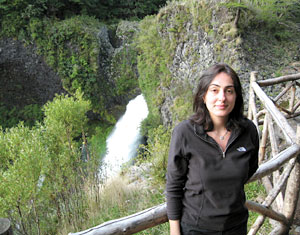Nadia Sood is the chief executive of the Norwegian state-owned energy giant, SN Power. She was in Nepal recently to meet government officials and inspect the site of SN Power's new project in the Tama Kosi basin. She spoke to Nepali Times about the investment climate for hydro developers in Nepal and gave suggestions to make the country more investor friendly.
Nepali Times: As the new head of SN Power what are the areas you'd like the company to concentrate on? 
Nadia Sood: SN Power has a long-term vision about its participation in the Nepali hydropower sector. As the new head of SN Power's South Asia business, I intend to keep SN Power focussed on participating in the development of Nepal's hydropower potential in a responsible and sustainable manner. As such, this will involve seeking out projects that are economically viable, which can help alleviate Nepal's load shedding problems by allowing for export/import to and from India. The projects can be developed in line with international standards for social and environmental sustainability.
What were your impressions from your recent visit to Nepal?
I was struck by how much unrealised potential exists in the country. Nepal seems to be poised on the cusp of a great future, but significant work needs to be done to ensure that the foundations for a healthy economy, that is, political will, acceptable infrastructure, prudent legal and regulatory framework, good governance, and an efficient bureaucracy are firmly established.
Have some of your plans for future expansion in Nepal changed after what you saw or heard from policy-makers in government?
While I was in Nepal, I had the opportunity to meet with all the ministries and departments, which have responsibility for or interface with hydropower development. During those meetings, I emphasised that SN Power is committed to continuing to develop hydropower in Nepal. But a pre-condition to doing so is that we can rely
on speedy, reliable and transparent decision-making when it comes to the licensing and permitting process. Our expansion plans hinge
very much on these things being in place.
How are preparations coming along for Tamakosi II & III?
Tamakoshi II & III is now in the feasibility study and environmental and social impact assessment stage. We are excited about the potential of this project, and look forward to working closely with the government and the local population to see the project through to completion.
What strategic direction would you like the Nepal government take for the development of its water resources?
Nepal needs to harness the potential of its water resources to help build the foundations for healthy and robust economic growth in the future. In practice, the easiest way for it to do so will be for it to stimulate the development of hydropower and over time establish a open-access electricity trading market both within Nepal and on a regional basis, similarly to what has been done in the Scandinavian countries. The first steps required to make this happen are strong focus on the establishment of a strong political and bureaucratic will, good legal and regulatory framework, reduction of red-tape and speedy decision-making. This will help attract foreign investors and open constructive interactions with India.
How would you characterise the present investment climate in Nepal, and what would you like changed?
Although Nepal is striving towards political stability, the current investment climate in Nepal is still quite uncertain. Nepal is on its way to formalising a number of regulations and policies that will be critical to ensure that it can continue to attract foreign investors. We look forward to following this development and will certainly be keeping a close eye on it as we continue to consider our investment strategy.
SEE ALSO:
'High and dry' - #444


